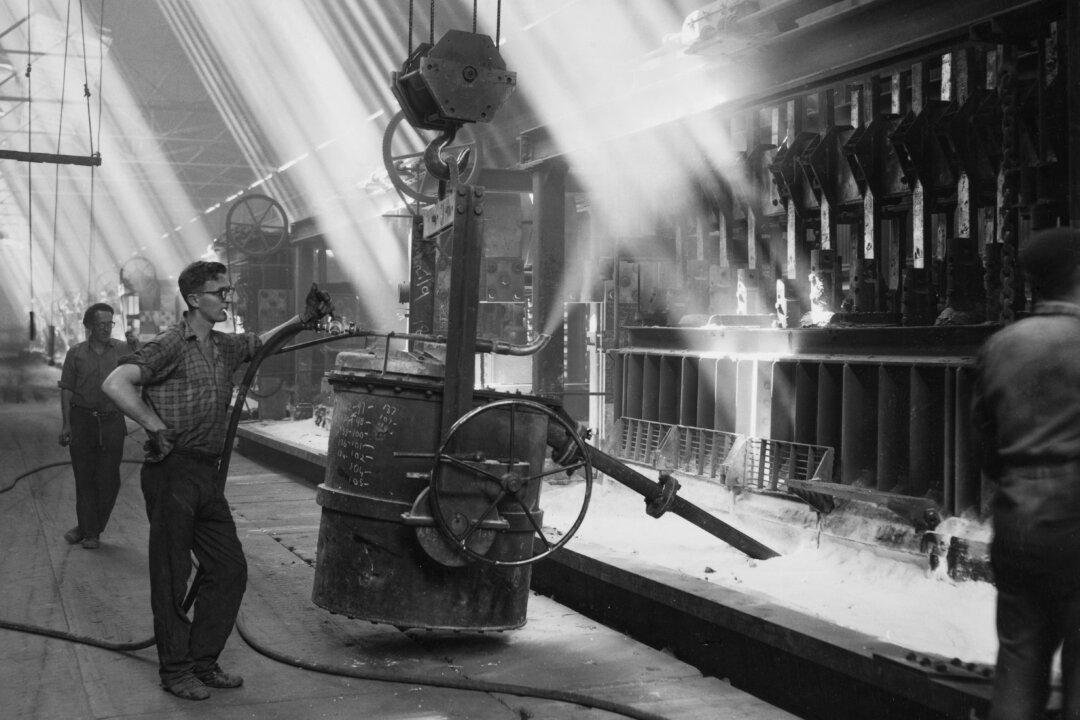The monthly report from the Department of Commerce on retail sales is out, but the numbers are disappointing.
The slight increase is better than the previous month’s decrease, but how long can this actually last? Another and more profound question is what these numbers can possibly mean, given that, as the release states, they are not adjusted for price changes.
An account I follow on X is Wall Street Silver and it just posted a Taco Bell receipt from 1999. It had tacos for 69 cents and a fully loaded burrito for $1. It seems absolutely beyond belief to look at those prices today. It seems almost unreal. Prices vary from place to place, but a reasonable estimate is that prices have tripled or quadrupled since then.
Inflation never went away but it seemed largely tamed between 2000 and 2020. Then the problems began as Congress and the Fed opened the money spigots. According to the official data, food away from home is up by 26 percent in four years. But this claim doesn’t fit with any real experience on the ground. The same data source, the Bureau of Labor Statistics, shows food at home up by about 25 percent in four years.
I cannot find any shopper who would agree with that claim. Fast food in particular has roughly doubled in price. It’s hard for most people to remember what food out cost four years ago, and inflationary times like our own do tend to scramble one’s mind and memory a bit. That said, I just bought four tiny tacos at a stand with perhaps two small dollops of meat, and the price was $21. The same stand four years ago offered large tacos at half that price.
What would a realistic number be on the inflation of food away from home? A grocery price index I follow shows increases at 35 percent, which seems closer overall. Of course, it all depends on what you are buying. And this is the real problem with index numbers. They cannot capture the full reality, and they may not capture any existing reality at all. They are subject to data-collection problems and judgment calls on weighting and cannot deal with myriad issues concerning packaging, quality, and transaction costs.
We have to have them if we want to gain a broad sense of what is going on, but they are not and cannot be a perfect reflection of the true story we experience all around us.
The underestimation of inflation is a serious problem for household finances. It tempts people to be in denial about what’s happening to the budget. They will continue to spend as before even if their real income is falling. That is good for sellers, but it is bad for buyers. I have no proof, but I do have a theory that electronic methods of retail payment have made buyers even less price-sensitive than they would otherwise be if people were using cash.
For reasons I cannot fathom, the Federal Reserve Bank of St. Louis reports retail sales without any inflation adjustment. This means that if you buy a hamburger for $5 this week and the same hamburger next week for $10, retail sales would show growth of 100 percent even though you purchased the same product.
That makes no sense. Another way to put it is that a report on sales without an inflation adjustment might only report dollar depreciation rather than retail vibrancy. As a result, it appears that we’ve been through a retail boom over three years, increasing by 35 percent.

What we see in his chart is a typical picture of what happens under high inflation. Everyone seems to be running faster and faster, but once you look down, you realize that you are on a treadmill. You are getting some good exercise, but you are not actually going anywhere. I promise you that this description will be immediately understood by anyone in retail sales today.
That said, retail has been a great blessing in these years for young workers who are looking for an entry into adulthood. This has been true especially for servers. As industrial upheaval hits more and more sectors, these positions have been reliable, even to the point of attracting ever more people. Newly graduating college students have found that serving at a local restaurant pays far more than any position they could otherwise get.
As a result, the competition for these jobs is increasing even as restaurants and hotels are faced with dramatic increases in inflation. One does wonder how long this boom in food and hospitality can last in the face of decaying household finances.
Meanwhile, California has created for itself an enormous problem for the entire sector by hiking the minimum wage to $20 per hour and thus vastly increasing costs for every service provider and making many workers unemployable. In just more than two months since all this went into effect, more than 10,000 jobs have been cut, affecting mostly entry-level positions and lower-skilled workers. This is cruel even if it makes people who support this huge minimum wage increase feel good.
Such actions are further hitting the retail sector in general. It is likely that in the coming months, consumers are going to wake up to the growing reality that their bank accounts are not balancing and seek out ever more ways to cut back on buying of all sorts. The one sector that seems to be sustaining the rest is going to weaken further and create the conditions for a prolongation of economic pain.
In the thick of such confusing times, it can be difficult to step back and look at the bigger picture. But once you do, you can clearly see that 2020 was a massive turning point in American economic life, going from a world that was hard but improving to a long economic decline. It only adds insult to injury that we’ve been told otherwise this entire time.
The lesson: Trust your own eyes, not the data reports.








